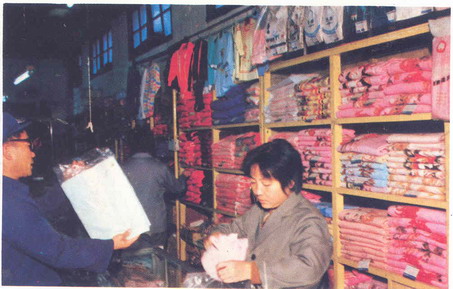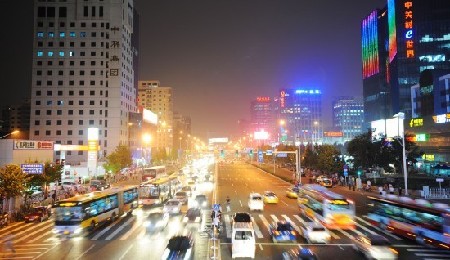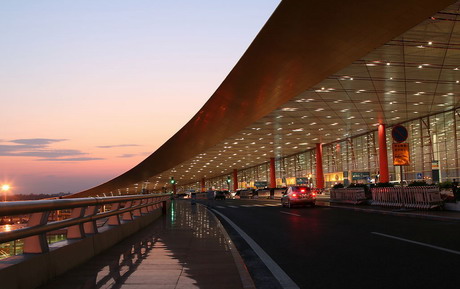|
I first visited China in 1982, four years after China opened its doors to the world. In those days, China maintained a very uniform, unisex appearance. Nearly everyone wore dark blue, gray, or black high collared Zhongshan jackets with matching hats affixed with a red star. Such uniformity in dress made it difficult to distinguish between male and female. Today, Zhongshan jackets have largely been replaced by a wide variety of colorful wear. People are much more stylish and concerned about buying name brands.
 a department store of the 80s
a department store of the 80s
The department stores of the 80s were dark, poorly stocked, and had inattentive service. Today, Chinese cities all boast modern, brightly lit, well decorated department stores with a wide variety of goods from around the world. Customer service hot lines are readily available for those shoppers with a complaint.
Even in Beijing, there were far more bicycles in the streets than today. Most cars came from Russia or Japan. Today, the situation is reversed: There are more cars than bicycles. Russian cars are not to be found. Instead, Audis, Buicks, Hyundais, and Volkswagens dominate the roadways.
 traffic stream in Beijing
traffic stream in Beijing
China’s infrastructure was very underdeveloped. Paved roads only ran from city centers to a few kilometers outside of city boundaries. Today, one can speed from the Northeast to the Southeast or from the East Coast to Gansu Province on a highway system that is just as good as any interstate highway in America. Airports are far more comfortable than in the past, and flights connecting every corner of country are more frequent.
 Beijing airport
Beijing airport
University students only totaled one million. Today, there are millions. University graduates were assigned a work unit by the government; today, they find their own job. Studying in America was just beginning; at present, there are close to sixty thousand students from China in American institutions of higher learning.
All housing was owned by the government and assigned to you by your work unit. Now people own their houses. Consequently, many attractive housing complexes have been built that look like they have been picked up in France or America and set down in China.
Contemporary Chinese life is far more comfortable than in 80s.
The author, Bill Sharp, teaches classes about Chinese politics at Hawaii Pacific University. He also is the Moderator for Asia in Review which is a weekly television show that conducts in depth interviews and panel discussions focused on major contemporary Asian events. He welcomes your comments and can be reached at wsharp@campus.hpu.edu.
By Bill Sharp
Editor: Li Cheng
|
